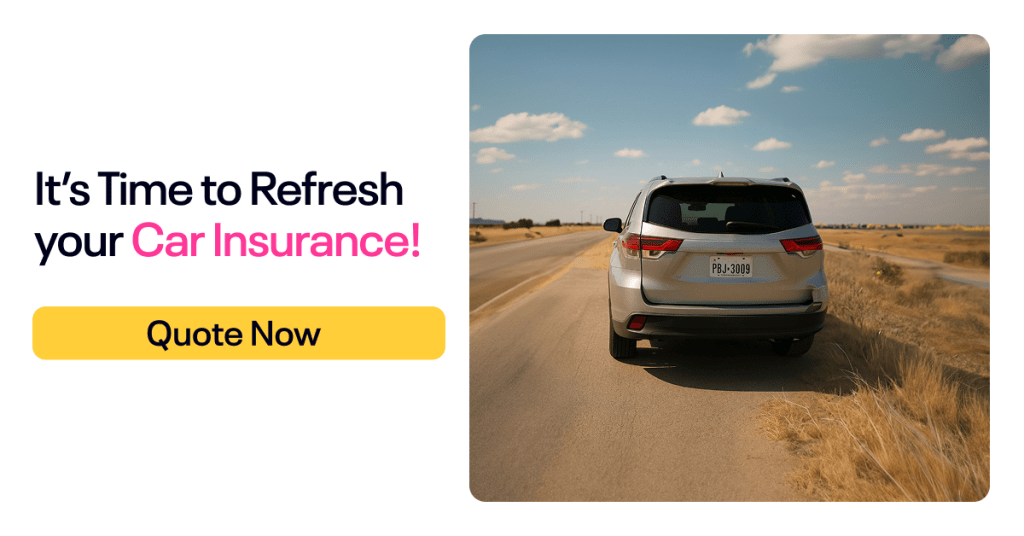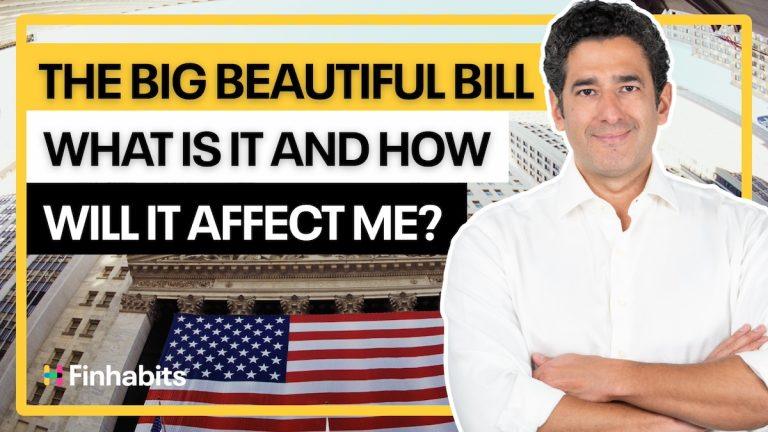You have to admit, the offers you hear from car insurance companies sound almost too good to be true: “15 minutes could save you 15% or more on your car insurance!” “Bundle and save!” “Score a safe driver discount!” And that’s because the last thing insurers want is for you to be switching auto insurance.
Car insurance companies actually do want you to save money — at least in the beginning. They roll out attractive discounts, send you “welcome to the family” messages, and make you feel like you’ve scored a great deal. But they are also counting on two things: one, your loyalty to them for saving you money. And two, your comfort level and laziness when it comes time to renew. If you’ve ever renewed your car insurance policy and thought, “Hmm, that’s a little higher than last year, but I guess that’s just how it is,” you know exactly what we’re talking about.
But here’s the good news. You can make those initial savings work to your advantage and ensure you keep saving up to hundreds of dollars not just one time, but for years to come. In this article, we take a closer look at how insurers really operate, how to switch car insurance, and most importantly, how to save money starting today.
Key Takeaways:
- Auto insurers want you to save money on car insurance … at least in the beginning.
- Follow the two-year rule: if you’ve been with your auto insurer longer than that, you’re probably leaving money on the table
- Insurance companies are relying on human behavior to keep you from switching
- Don’t be fooled by the myths of switching your car insurance
- Use Finhabits’ auto comparison tool to see how much you could be saving on car insurance starting today
The Hidden Business of Auto Insurance
Auto insurers are in the business of risk — but they’re also in the business of relationships. When you’re a brand-new policyholder, you’re not just a customer; you’re a jackpot. They’ve just spent a staggering amount of marketing dollars to get you in the door, so they’re motivated to give you a competitive rate to seal the deal. Think about it; how many ads do you see per day from insurance companies? Attracting and winning your business is a billion-dollar effort. To give just one example, Progressive Insurance spent nearly $3.5 billion in advertising in 2024, up 186.8% from the $1.22 billion it spent in 2023.[1]
Car insurance companies want your business, and they’re willing to pay for it. That’s why your first policy often feels like a win — you get the new customer discount, or a safe driver discount, and a few bonus offers.
Sounds like a win-win, right? But here’s where it gets tricky:
- The Honeymoon Period Ends
After that first year or two, those excellent discounts fade. Your “loyalty” becomes less profitable for them, so they quietly increase your premiums. Not in one big jump — just a little at a time so you don’t notice. And you, the customer, will almost always absorb these increments as the price of doing business. - Risk Reassessment
Even if you haven’t had an accident or ticket, insurers re-evaluate your rate based on local trends — maybe accident rates went up in your city, or theft became more common in your zip code. In other words, your rate may go up because of factors that are completely out of your control. - The Loyalty Tax
Long-term customers often pay more than new ones because insurers know they’re unlikely to shop around. It’s called price optimization — they set rates based on how much they think you’ll tolerate before switching.
Why do insurance companies offer you great discounts when you switch? Because this system works really well for them. In the long run, their customers end up paying hundreds more per year than necessary.
Carlos García’s 2-Year Rule of Auto Insurance
At Finhabits, our goal is to help you make smart financial decisions so that you can protect and grow your wealth. That includes helping you invest your hard-earned money so that your savings start working for you, and giving you the education and tools to help you save money every year.
And we know your car insurance could be one of the easiest ways to save, especially if you follow our two-year rule. “Two years is the magic number,” says Carlos García, Founder & CEO of Finhabits. “If you’ve been with your auto insurer longer than that, there’s a strong chance you’re leaving money on the table. Insurance companies know that after two years, most people stop comparing rates — and that’s when they make their money.”
Why two years? Because that’s the average lifespan of the initial discounts you get as a new customer. Once they expire, your premiums are quietly adjusted upward.
For insurance companies, those initial incentives are merely the cost of earning your business. But it also means you have the power to keep them honest by comparing rates regularly.
Why Staying Loyal Can Cost You Hundreds
Loyalty to a brand or company is often rewarded. Customers enjoy perks and benefits, from frequent flyer miles with airlines to exclusive discounts at retailers. Staying loyal to your insurance company, on the other hand, isn’t always so rewarding, and that’s because your rate can go up no matter how loyal you are. Even if you’re a safe driver, factors like inflation, changes in your zip code, and shifting insurer priorities can cause premiums to creep up. In 2024, auto insurance rates rose by almost 22% compared to the year before.[2]
The truth is that loyalty might earn you valuable rewards from some of your favorite brands— but in auto insurance, it’s often a money drain. In the industry, it’s known as the “loyalty penalty.” But don’t take our word for it; use the easy car insurance calculator from Finhabits to compare rates from more than 20 trusted insurers nationwide.
How Does Car Insurance Work? A Study in Psychology
Insurance companies understand human behavior. Their profitability relies on the fact that most people:
- Hate paperwork.
- Fear change (especially when it comes to something as important as insurance).
- Assume all car insurance rates are basically the same.
They design renewal notices to look boring and routine. Rate increases are often small enough to avoid raising eyebrows. Over time, you just accept the new price without question.
In many Latino families, there’s also a cultural element — loyalty is a virtue, and switching can feel like betrayal. But remember: you’re buying a product, and it’s smart to shop for the best deal. In fact, that’s exactly what savvy shoppers are doing. An insurance shopping study conducted by J.D. Power found that 57% of customers in 2024 shop for insurance year over year, up from 49% the year before.[3]
How Much Is Car Insurance, and Why Are Rates Rising?
Whether or not you’ve noticed it in your policy or in your pocket, your car insurance has more than likely been going up year over year, especially if you’ve been with the same insurer. Since January 2020, the cost of auto insurance has risen 56%, according to the U.S. Bureau of Labor Statistics. And it shows no sign of slowing down: From April 2024 to April 2025, it increased by 6%.[4]
There are several reasons for this increase. President Trump’s tariff policies, for one, may affect not only car manufacturers but insurers as well, with car insurance costs for full-coverage policies expected to rise by as much as 7% this year, according to one study.[5] Other factors include the rising cost of vehicle repair, as well as more frequent and more severe car accidents.[6]
With one of your most basic (and expensive) monthly bills likely to go up, now is the time to shop around and see if you can put some of that money back in your pocket. And it won’t cost you a dime.
How to Save on Car Insurance — Step by Step
There are many reasons why even the smartest shoppers don’t save on car insurance. Maybe you had an accident in the past two years and are convinced there is no way your rate will go down once an insurer knows about it. Perhaps you feel your age works against you.
Here’s the truth: no matter what your driving record or personal details are, you may be able to save on auto insurance. Here’s a simple, repeatable process for how to save on car insurance that can have you hacking the system and coming out ahead, year after year.
- Review Your Policy Every Year
Don’t wait until your renewal letter arrives. Set a calendar reminder to review your policy terms and premium annually.
- Get Multiple Quotes
Different insurers calculate risk differently. The same driver can get quotes that vary by hundreds of dollars.
- Reassess Your Coverage Needs
Do you still need comprehensive coverage on a car that’s 12 years old? Could you raise your deductible to lower your monthly rate?
- Ask About Discounts
Safe driver, low mileage, bundling home and auto, being a student, or even belonging to certain organizations are among the auto insurance discounts that can save you money.
- Use a Comparison Tool
Instead of spending hours filling out forms for different companies, Finhabits lets you enter your info once, see quotes from top insurers, and compare side-by-side. It’s completely free, safe, and 100% online. Plus, you can learn if you are able to save money without changing your coverage or deductible.
Why Save With Finhabits
Finhabits was built with the goal of closing the financial gap for Latinos. That means giving you the tools to make smarter decisions — in your language, at your comfort level.
With our auto insurance comparison tool, you can:
- Enter your info in minutes.
- Get quotes from multiple top-rated insurers.
- Find potential savings of hundreds of dollars per year.
No cold calls, no surprise fees — just clear numbers from trusted providers, so you can choose the best deal.
Common Myths About Switching Auto Insurance
People don’t like change, even when it is good for them. But beyond that simple truth, there may be a host of other reasons why you might be hesitant to switch your car insurance. Some of these may be perfectly valid. The ones below, however, are untrue:
Myth 1: Switching will leave me uninsured.
Truth: Your new policy starts before your old one ends to avoid any gap.
Myth 2: My rate will go up if I switch too often.
Truth: In most cases, switching only affects your rate if you have gaps in coverage — otherwise, it can lower it.
Myth 3: All companies offer the same rates.
Truth: They don’t — not even close. Your quote depends on their formulas, which change all the time.
Myth 4: It’s not worth the hassle.
Truth: Maybe you don’t think you’ll really save all that much by switching. To get a better idea of the potential savings to your wallet, let’s look at the facts. In August 2025, the average full coverage policy was $2,679 a year (or $223 a month).[7] If we take the famous “15% savings” as a baseline, that’s a savings of just over $400 per year. Not bad for just a few minutes of your time. And remember, with Finhabits’ auto insurance calculator, we do all the hard work. There is no commitment and absolutely no fees to comparison shop.
For many people, the fear of switching is bigger than the reality. Once you’ve tried it with our auto insurance comparison tool, you’ll see how easy it can be.
Final Thoughts: Don’t Wait for Your Next Renewal
Insurance companies want you to feel like you’re saving money with them and will make it financially attractive for you to become a customer. But over time, the scales tip in their favor. That’s why it’s essential that you actively shop around.
Remember Carlos García’s 2-year rule: If it’s been more than two years since you last compared rates, you’re probably overpaying. Why let that money slip away?
Take 5 minutes today to try our auto insurance comparison tool. You could save enough to cover a few car payments, take a family trip, or simply put more money back in your pocket — where it belongs.
Frequently Asked Questions
What do you need for a car insurance estimate?
Getting a quote from multiple insurers has never been easier! With our comparison tool, you only need your zip code, location, and a few personal details. The entire process takes only minutes and is completely free, with no obligation to you.
Can you get car insurance without a license?
Yes, it is possible to get car insurance without a license, but it will likely be more difficult and expensive. Insurance companies will probably consider you a higher risk if you don’t have a license. And even though you can purchase insurance without a license, it is illegal to drive without a license in every state. To get an idea of what type of coverage and rate you can get without a license, use our comparison tool and select -No- when asked if your driver’s license is currently valid.
Do you have to have car insurance to buy a car?
You can buy a vehicle without having car insurance. However, if you are financing your vehicle, lenders will typically require insurance coverage before loaning you the money for the car.
Is car insurance required in my state?
Some form of car insurance is required in every U.S. state with one exception: New Hampshire.
Sources:
- CBS News: Here’s what’s in Trump’s “big, beautiful bill” passed by Congress
- [1] S&P Global: Progressive’s advertising expenditure hits record high in 2024
- [2] AP: Surging auto insurance rates squeeze drivers, fuel inflation
- [3] J.D. Power: Despite Slowing Rate of Increase in Auto Insurance Pricing, Most Customers Still Shopping, J.D. Power Finds
- [4] U.S. News & World Report: Why Are Car Insurance Rates Going Up?
- [5] The Independent: Trump’s tariffs are not only making cars more expensive, but insurance as well
- [6] CNN: What’s behind the rapid increase in car insurance rates
- [7] CNC: How much is car insurance in August 2025?
- [8] Yahoo! Finance: Minimum car insurance requirements in all 50 U.S. states






